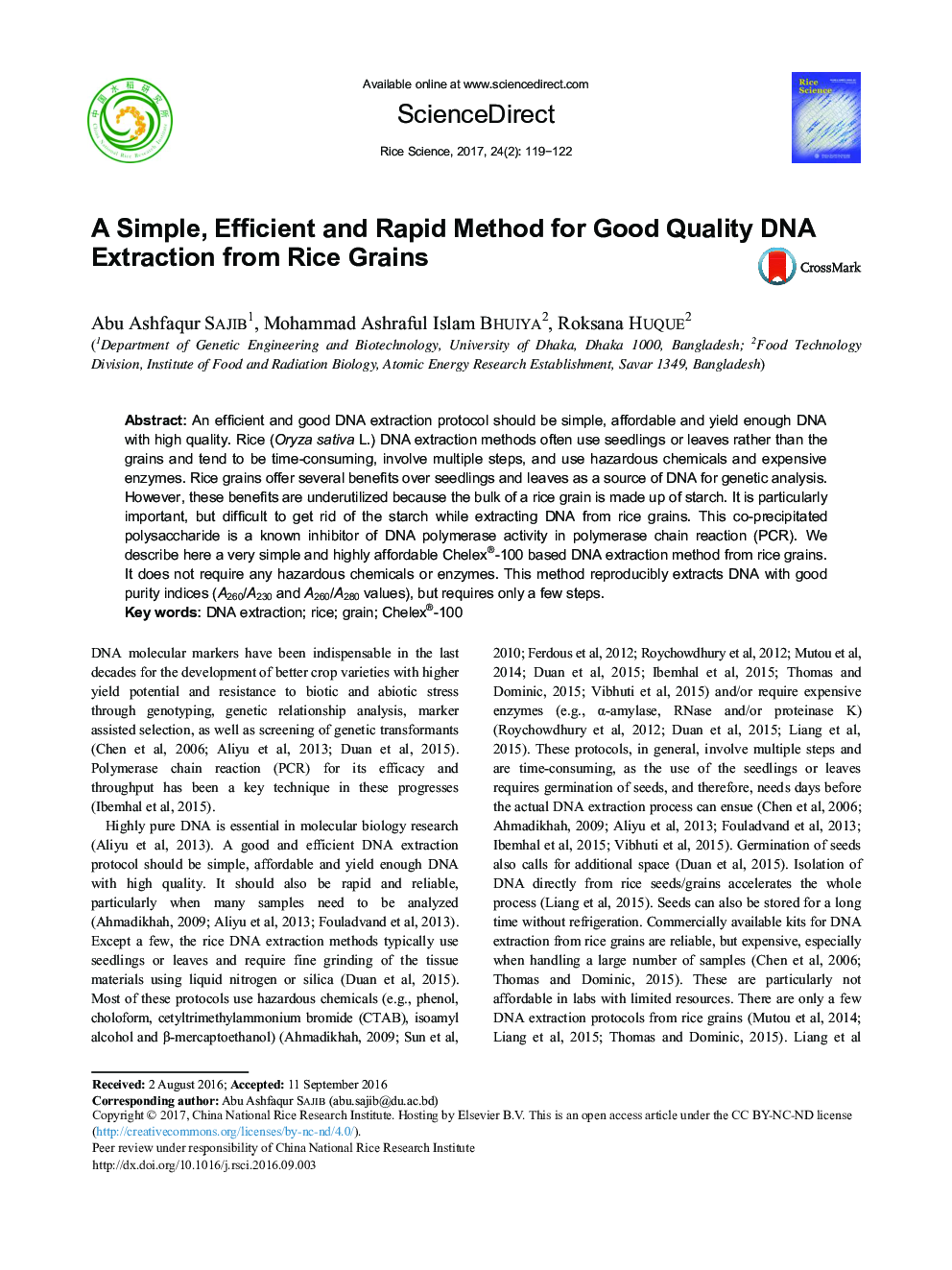| Article ID | Journal | Published Year | Pages | File Type |
|---|---|---|---|---|
| 8877381 | Rice Science | 2017 | 4 Pages |
Abstract
An efficient and good DNA extraction protocol should be simple, affordable and yield enough DNA with high quality. Rice (Oryza sativa L.) DNA extraction methods often use seedlings or leaves rather than the grains and tend to be time-consuming, involve multiple steps, and use hazardous chemicals and expensive enzymes. Rice grains offer several benefits over seedlings and leaves as a source of DNA for genetic analysis. However, these benefits are underutilized because the bulk of a rice grain is made up of starch. It is particularly important, but difficult to get rid of the starch while extracting DNA from rice grains. This co-precipitated polysaccharide is a known inhibitor of DNA polymerase activity in polymerase chain reaction (PCR). We describe here a very simple and highly affordable Chelex®-100 based DNA extraction method from rice grains. It does not require any hazardous chemicals or enzymes. This method reproducibly extracts DNA with good purity indices (A260/A230 and A260/A280 values), but requires only a few steps.
Keywords
Related Topics
Life Sciences
Agricultural and Biological Sciences
Agricultural and Biological Sciences (General)
Authors
Abu Ashfaqur Sajib, Mohammad Ashraful Islam Bhuiya, Roksana Huque,
